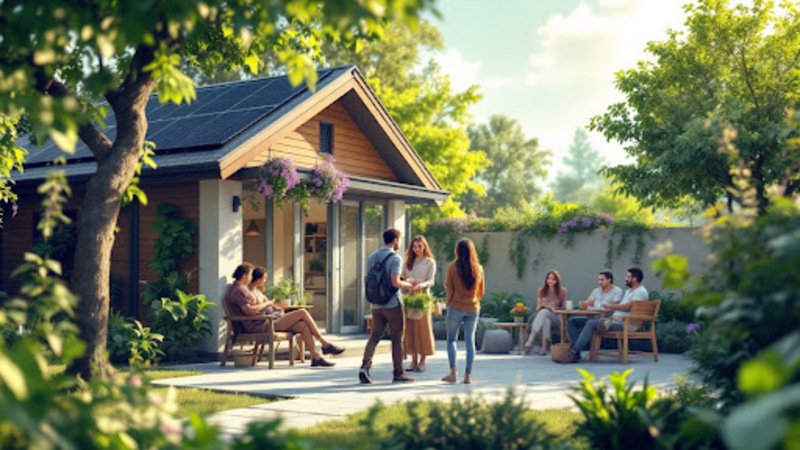As The Green Road to Recovery world increasingly prioritizes environmental responsibility, many sectors are exploring ways to reduce their ecological footprint. Sober living homes, which provide transitional support for individuals recovering from addiction, are well positioned to integrate sustainability into their operations. Incorporating environmentally conscious practices can benefit the planet while also creating healthier, more supportive environments that align with recovery goals. This article explores why sustainability matters for sober living homes, the benefits of adopting green strategies, and practical steps to begin the process.
Why Sustainability Matters in Sober Living Environments
Sober living homes provide safe and structured environments where individuals can rebuild their lives after intensive treatment. These homes emphasize community, responsibility, and wellness—values that align closely with sustainability. By integrating eco friendly practices, sober living facilities can strengthen these principles and foster a culture of accountability and mindfulness.
According to the U.S. Environmental Protection Agency (EPA), residential buildings account for about 20 percent of total energy consumption in the United States. This highlights the potential for facilities such as sober living homes to reduce energy use and lower operating costs while contributing to broader climate goals.
Research has also shown that access to green spaces can support mental health. Studies have found associations between exposure to natural environments and reduced levels of stress, anxiety, and depression. Such findings suggest that incorporating sustainability and nature into sober living homes can support both environmental and personal well-being.
In addition, renewable energy solutions such as solar panels can decrease reliance on fossil fuels. When residents see visible results from these efforts, such as lower utility bills or a reduced carbon footprint, it can foster a sense of empowerment. This sense of agency is especially valuable during recovery, where regaining control over life choices is an important step.
Finally, the use of non-toxic, sustainable building materials can improve indoor air quality. Conventional materials often contain volatile organic compounds (VOCs) that may negatively affect physical or mental health. Choosing safer alternatives such as natural insulation or low-VOC paints can create a healthier indoor environment and support overall recovery.
Key Sustainable Practices for Sober Living Homes
Energy Efficiency and Renewable Energy
Simple upgrades such as LED lighting, energy-efficient appliances, and proper insulation can significantly reduce energy consumption. These measures lower costs over time while reducing greenhouse gas emissions. For facilities with the budget and infrastructure, investing in solar panels can provide long-term benefits. Incentives and tax credits offered in many states can also make renewable energy more accessible.
Water Conservation and Waste Reduction
The Green Road to Recovery Water conservation practices include installing low-flow fixtures, repairing leaks promptly, and using drought-resistant plants in landscaping. Rainwater harvesting systems can further reduce water use.
Waste management is another area where sober living homes can improve sustainability. Recycling programs, composting, and limiting single-use plastics help minimize waste. Educating residents about these practices also supports recovery values of responsibility and mindfulness.
Healthy and Sustainable Food Choices
Nutrition is a critical part of recovery, and sober living homes can strengthen wellness by promoting healthy and sustainable food choices. Sourcing locally grown or organic produce supports both environmental and physical health. Incorporating more plant-based meals can also reduce environmental impact.
Community gardens are a valuable option, providing residents with fresh produce while offering therapeutic and educational opportunities. Gardening can help residents develop new skills, foster a sense of accomplishment, and strengthen connections to nature.
Designing Green Spaces to Support Recovery
The Green Road to Recovery physical environment plays an important role in well-being. Outdoor areas designed for relaxation, exercise, and mindfulness can contribute to the recovery process. Studies have shown that access to natural settings may reduce anxiety and depressive symptoms, which are common challenges during recovery.
Native plants, shaded seating areas, and walking paths can make outdoor spaces both functional and restorative. Indoors, using natural cleaning products, ensuring ventilation, and improving air quality with safe materials can further enhance the living environment.
Community Engagement and Education
Sustainability is most effective when it becomes part of the community culture. Involving residents in workshops, clean-up events, and group projects can promote teamwork and shared responsibility. Collaborating with local environmental organizations can bring additional resources and create opportunities for community involvement. Such initiatives also enhance the social reputation of sober living facilities by demonstrating their commitment to broader social values.
Challenges and Solutions in Implementing Sustainability
Some sober living homes may face challenges such as budget limitations or resistance to change. However, many sustainable practices, such as switching to LED lights or starting a recycling program, require minimal investment and can reduce costs over time.
Grant programs and funding opportunities for green initiatives are often available to nonprofit organizations and community housing providers. These resources can help offset initial expenses. Education also plays a critical role in building acceptance, as clear communication about the benefits of sustainability can encourage participation from both staff and residents.
The Future of Sustainable Sober Living Homes
The Green Road to Recovery integration of sustainability into sober living homes represents a forward-looking approach that combines recovery with environmental responsibility. Innovations such as smart home technology, green building certifications, and zero-waste initiatives are becoming more widely available and may set new standards for supportive housing.
Ultimately, adopting sustainability in sober living homes creates healthier, more resilient environments that empower residents on their journey to long-term recovery while contributing positively to the planet. This dual focus on personal healing and environmental stewardship provides a foundation for lasting change.If you need more details to WORLD US MAGAZINE visit.


